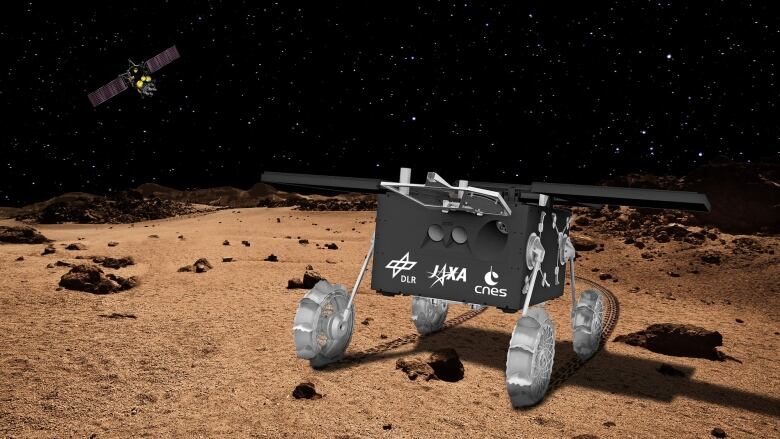Space agencies join forces with Japan to explore Mars's potato-shaped moons
The goal of the mission launching in 2024 is to figure out how the moons came to be

NASA officially signed a deal in April to cooperate with the Japan Aerospace Exploration Agency's (JAXA) ambitious mission to explore Phobos and Deimos, the moons of Mars, and land on Phobos and return a sample to Earth.
The project, called Martian Moons eXploration (MMX), is scheduled to launch in 2024, reach Mars in 2025 and will become the first mission to bring a piece of a moon from another planet to Earth in 2029.
JAXA is getting help from NASA, as well as from the European Space Agency (ESA), France's National Centre for Space Studies (CNES) and the German Aerospace Center (DLR).
Both the U.S. and Japan have had success returning samples from asteroids with Japan's Hayabusa 1 and 2 missions and the recent NASA success with OSIRIS-REx bringing back material from asteroid Bennu.
Phobos is the larger of two moons that orbit Mars, although larger is a relative term. Both moons are potato-shaped with Phobos measuring just 26 kilometres at its widest point and its partner Deimos only 16 kilometres across. Both of them would easily fit inside the Greater Toronto Area.

The goal of the mission is to determine whether these objects are captured asteroids or pieces of Mars that were blown off its surface by impacts.
Landing on a small body is challenging because the surface gravity on Phobos is less than one-one-thousandth of the gravity on Earth. The MMX mother spacecraft will release a rover that, if successful, will become the first to travel across a small body in our solar system under such low gravity.

The rover is designed to withstand several bounces on Phobos and then turn itself upright no matter what position it lands in. Its instruments will gather data to better understand the moon's surface and to help scout for two different locations where the mother spacecraft will land and collect samples.
Without much information about what the surface of Phobos is like, JAXA engineers had to essentially guess what type of legs the lander needs to successfully touch down after its 20-metre free fall.
There are no guarantees the rover or lander will be able to safely accomplish these feats, which could prematurely cut part of the mission short.
We saw this happen in 2014 with the European Space Agency's Rosetta mission when its lander named Philae bounced several times across the surface of the comet it had rendezvoused with, and ended up jammed in a crevice. MMX will have to approach Phobos very delicately to avoid a similar fate.

Phobos would be a strange place for a human to visit. Any normal person would feel like Superman there. Walking would be difficult under the extremely low gravity where your body would only weigh a few grams. Even the smallest step would lift you off the ground, and you would float for several seconds before slowly drifting back down.
The best way to get around would be to take long flying leaps across the surface. But don't leap too fast — the escape velocity is only 40 km/h, which is about twice the speed of an average bicycle. So with a little effort, you could jump right off into space.

Phobos space station?
Mars has received a lot of attention with numerous spacecraft in orbit and landing on its surface over the past decades with plans to put people there in the decades to come. But the two moons have only been studied from a distance and not explored in detail.
A Russian mission called Phobos Grunt had similar sample return ambitions back in 2011, but communication with the spacecraft was lost soon after its launch, while it was still in orbit around the Earth, so it never made it to Mars.

Phobos could be an interesting candidate for a natural space station for Mars. An outpost there could act as a staging area for missions traveling to and from Mars the way the proposed Lunar Gateway station will act around the Earth's moon.
A crew posted there would have a spectacular view as it orbits Mars twice a day. The Red Planet would loom large over the horizon just over 9,000 kilometres away. You could look down into the Valles Marineris — the deepest canyon in the solar system, across vast plains of sand dunes and soar over a mountain more than twice the height of Mount Everest.
All that while flying like a superhero.

